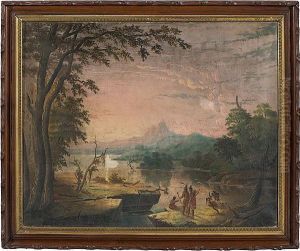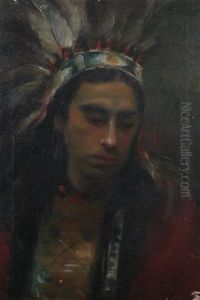Sala Bosworth Paintings
Sala Bosworth was an American artist born on May 3, 1805, in Belpre, Ohio. Not widely known in the canon of prominent American artists, Bosworth's work primarily consisted of portraiture, landscapes, and religious subjects. He was a part of the early 19th-century movement of itinerant artists, moving from place to place to seek commissions from patrons, particularly in areas where access to professional artists was limited.
Bosworth received his early education in his hometown before he pursued his artistic training. There is limited information regarding his formal art education, but like many artists of his time, he likely learned through apprenticeships or by being a journeyman under the guidance of an established artist. His early works would have been influenced by the styles and techniques of the period, which often included a blend of realism and romanticism.
Throughout his career, Bosworth remained relatively obscure, focusing on his work rather than seeking fame or widespread recognition. His portraits are noted for their detail and the ability to capture the character of the sitter. In addition to portraits, he painted landscapes that reflected the American countryside, imbued with a sense of tranquility and the sublime, which was a popular theme in American art during the 19th century.
Later in life, Bosworth's work took a religious turn, and he began to produce paintings with biblical themes. This shift in subject matter reflects a broader trend in American society at the time, where there was an increased interest in religious and moral themes in art, perhaps influenced by the Second Great Awakening, a Protestant revival movement.
Sala Bosworth's death on December 3, 1889, marked the end of a quiet but dedicated artistic career. Although he may not have achieved the same level of fame as some of his contemporaries, his work provides a valuable insight into the life and times of America during the 19th century. His paintings today are treasured as historical artifacts that capture the essence of the period in which he lived and worked. Bosworth's legacy continues to be appreciated by those who study regional art history and the development of American portraiture and landscape painting.

